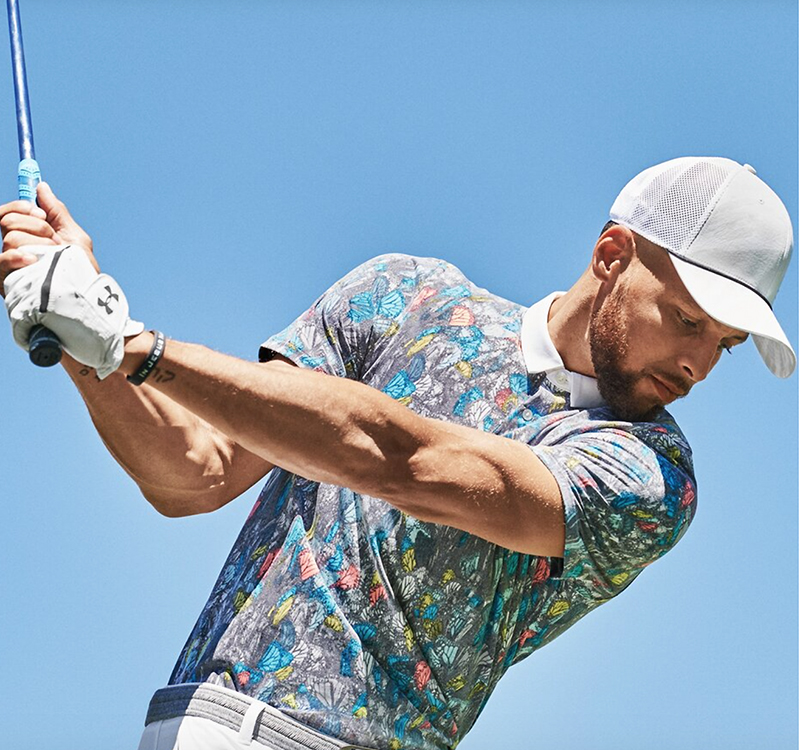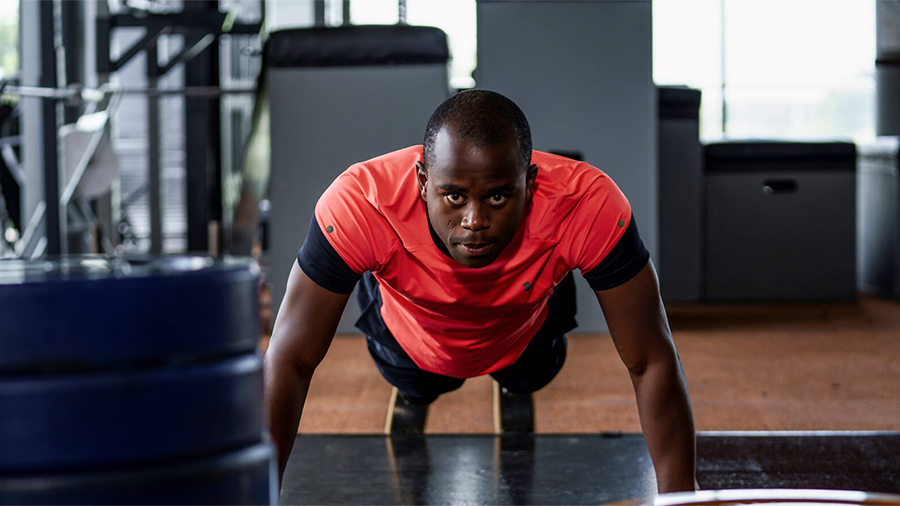Under Armour Inc. reported better-than-expected second-quarter results and significantly raised its full-year guidance. Broad-based sales growth and healthier full-price selling were seen across categories and regions led by North America.
“At the halfway point of 2021, our better than expected results continue to validate that our multi-year transformation is working,” said Under Armour President and CEO Patrik Frisk on a conference call with analysts.
He highlighted Under Armour’s ability to drive “higher quality growth” with gross margins in the quarter improving better-than-expected and overall profitability surpassing pre-pandemic 2019 results. Frisk added, “In fact, diluted earnings per share through the first six months of 2021 are greater than the full year 2019.”
Frisk added that he believes Under Armour is “better positioned today to drive greater returns to our shareholders than we were before the pandemic started” while also noting the pandemic continues to present challenges, including impacting key sourcing areas in Southeast Asia.
He added, “The resiliency we’ve earned over the last year and a half will continue to serve as an asset while we navigate the second half of 2021.”
Sales Led By Triple-Digit Wholesale Growth
In the quarter ended June 30, sales improved 91.0 percent to $1.35 billion, or 85 percent currency-neutral. Wall Street’s consensus estimate had been $1.218 billion.
The gain reflects easy comparisons against year-ago store closures. The better-than-expected performance was attributed primarily to higher demand across wholesale and factory house businesses.
Wholesale revenue surged 157 percent to $768 million. The gains were driven by broad-based growth as store closures were lapped in the prior year. Additionally, most of the wholesale outperformance was due to stronger sell-through and higher demand in North America.
Direct-to-consumer (DTC) sales increased 52 percent to $561 million, driven by strong growth in owned and operated stores offset by an 18 percent decline in e-commerce. E-commerce represented 39 percent of the total DTC business.

By product category, Apparel revenue climbed 105 percent to $874 million, driven strength in training, golf and run categories. Footwear revenue increased 85 percent to $343 million, driven by run and team sports. Accessories revenue advanced 99 percent to $112 million, fueled by hats, bags and sport masks.
Licensing revenues grew 276 percent to $23.3 million, driven by increases in its North American partner business.
By region, North America’s revenue jumped 101 percent to $905 million. At wholesale, Under Armour’s North America business continued to drive lower markdowns with tighter inventory enabling fuller price sell-through. Within DTC, the performance of owned and operated stores strengthened due to easier comparisons to the prior year when most locations were closed. E-commerce declined due to particularly tough year-ago comparisons.
International revenue gained 100 percent to $446 million, up 84 percent currency-neutral.
Within its international business, revenue increased 133 percent in EMEA, up 116 percent currency-neutral), driven by growth in wholesale and DTC with significant strength across wholesale and distributor partners.
Revenues increased 56 percent in Asia-Pacific (up 43 percent currency neutral) with balanced growth across all channels. Sales increased 317 percent in Latin America (up 284 percent currency neutral), driven primarily by lapping year-ago store closures. The Latin America performance will be impacted in the second half, particularly in the fourth quarter, as certain countries transition to distributor models.
Gross margins Beat Plan On Reduced Promotions
Gross margins in the quarter increased 20 basis points to 49.5 percent driven primarily by benefits from pricing and changes in foreign currency offset by channel mix and the sale of the MyFitnessPal platform, which carried a higher gross margin rate. The margin rate was better than expected versus its previous outlook due to lower than planned promotions enabled through higher demand, along with driving more favorable pricing.
SG&A expenses increased 14 percent to $545 million primarily due to increased marketing expenses and costs associated with its owned and operated stores, which were closed most of last year’s comparable period due to the pandemic.
Restructuring charges totaled $3 million in the latest quarter. Since the plan was introduced in April 2020 with a goal of rebalancing its cost base to improve profitability and cash flow, $483 million of the estimated charges of $550 million to $600 million under the plan have been recognized. Under Armour expects to recognize approximately $40 million to $50 million in charges related to this plan in the third quarter.
Operating income in the quarter was $121 million against a loss of $169.7 million a year ago. Adjusted operating income was $124 million.
Net income was $59 million, or 13 cents a share, against a loss of $182.9 million, or 40 cents, a year ago. Adjusted net income was $110 million, or 24 cents, nearly doubling Wall Street’s consensus estimate was 24 cents.
Inventory was down 26 percent to $881 million. The decline reflects steps to drive inventory efficiencies with some inbound shipping delays due to COVID-19-related supply chain pressures.

Under Armour’s Four Strategic Pillars
In his commentary, Frisk updated the brand’s progress on its four strategic pillars: Strengthening the Under Armor brand; Improving the operating model; Amplifying a DTC-focused approach; and Increasing its capacity to return greater profitability across the company.
Around strengthening the brand, Frisk elaborated on Under Armour’s plan announced previously to reinvest some of this year’s upside into additional marketing efforts to capitalize on increasing awareness, attraction and consideration for the Under Armour brand.
Third-quarter marketing activations will highlight the importance of mental strength. Said Frisk, “Certainly, coming out of a long stretch of COVID restrictions and as team sports hopefully open up more broadly this fall, we believe this is a timely effort to draw consumers into the psyche that is uniquely Under Armour as we work to make them better.”
On product, highlights in apparel in the quarter included strong sell-through for it Iso-Chill running range, Unstoppable men’s bottoms, Meridian women’s leggings, and across its No-Slip Waistband technology. Bras continued to build on the category’s momentum with “meaningful increases” in Infinity and Crossback products, according to Frisk. Solid results were seen in tops featuring Rush technology. Project Rock built on its momentum with strong responses to new drops.
In footwear, Flow Velociti performed well in all regions. The Hovr Phantom and Hovr Machine 2 saw significant growth against strong year-ago gains. The Charge Pursuit 2 and Charge Assault Nine also posted “substantial numbers,” added Frisk., In the Curry brand, Curry Flow 8 signature shoe and retro styles pre-released in the APAC region, saw momentum with the Curry Flow 9 set to debut later this year. The Project Rock 3 shoe “was also a standout,” said Frisk.
On improving its operating model, the focus continues to be on execution with a goal of “creating products at the right price and getting it to the right place at the right time,” stated Frisk.
He elaborated on progress across regions against the 2019 period that wasn’t distorted by the pandemic.
North America Sales Climb 11 Percent Versus Q119
In North America, revenue was up 11 percent in the second quarter and about 3 percent for the first half against the comparable 2019 period. Frisk said the improvement reflected Under Armour’s success in driving higher quality revenue through “sharper segmentation, tighter inventory management and delivering consistent service to our customers”
The gains reflected significant increases in its DTC business offset by considerably lower sales to the off-price channel, reduced overall promotional and markdown activities and planned supply constraints designed to support demand.
Said Frisk, “All of this, of course, is geared to continuing to lift the Under Armor brand to a more premium level in our largest market, and to that point, as evidenced by our gross margin results, this strategy is working. From a channel perspective, we feel good about the pace we’re earning backspace with our key North American wholesale partners, driving full-price revenue and showing up both digitally and physically in a more comprehensive way than ever before.”
Revenue from our owned and operated stores increased “meaningfully” in North America in the quarter, including improved quality and composition of sales, he continued.
For the full year, the North American business is expected to increase at a low-20s percentage rate compared to 2020. Versus 2019, North America will be close to the same revenue, which reflects less off-price sales, lower discounts and promotions and tighter supply constraints, with the brand’s exit of undifferentiated retail accounts that start in the third quarter.
Said Frisk, “That leaves me confident that we’re setting ourselves up for improving brand-right profitable growth in 2022 and beyond.”
Internationally, revenue in the latest quarter was up at a mid-30s percentage rate versus 2020 or up at a high-20s rate on a two-year stack.
Frisk said its DTC business saw a 33 percent year-over-year increase in revenue for the second quarter and a 32 percent increase for the first half versus 2019. Owned stores benefited from improved traffic trends and higher average selling prices in the quarter, driving better productivity and more normalized promotions,
Said Frisk, “Longer term, we remain focused on building the capabilities necessary to become a best-in-class retailer by creating incredible experiences at our full-price brand house stores and better leveraging our factory house locations to drive greater overall profit.”
E-commerce was down in the second quarter due to tough comparisons but up 53 percent compared to 2019. The gains came despite the exit the heavy promotions on the site experienced in 2019 and benefited from platform investments over the last 18 months. E-commerce is expected to increase at a high-single-digit rate in 2021 and be up nearly 50 percent on a two-year stack.
Frisk concluded that the increased guidance reflects the progress the company is making increasing shareholder value over the long term.
“Our strategy to return to profitable brand right growth is working,” said Frisk. “High quality and composition of revenue, including significantly reduced off-price sales and less promotions and discounting, are driving more productive dollars through our P&L. Those factors are contributing nicely to margin improvements and greater EPS demonstrating the results of our transformation and the stronger foundation we have built over the past couple of years.”
Key points related to Under Armour’s full-year 2021 outlook include:
- Revenue is expected to be up at a low-20s percentage rate compared to the previous expectation of a high-teens percentage rate increase, reflecting a low-20s percentage growth rate in North America and a mid-30s percentage growth rate in the international business;
- Gross margin is expected to increase 50-to-70 basis points compared to the previous expectation of an approximate 50 basis point improvement versus the prior year adjusted gross margin of 48.6 percent with expected benefits from pricing and changes in foreign currency offset by the sale of the MyFitnessPal platform and expected higher freight expenses;
- Operating income is expected to reach $215 million to $225 million compared to the previous range of $105 million to $115 million. Excluding the impact of restructuring efforts, adjusted operating income is expected to reach $340 million to $350 million compared to the previous expectation of $230 million to $240 million; and
- EPS is expected to be 14 cents to 16 cents compared to the previous expectation of a diluted loss per share of 2 cents to 4 cents. Adjusted diluted EPS is expected to reach 50 cents to 52 cents compared to the previously expected range of 28 cents to 30 cents per share.
Photos courtesy Under Armour
















